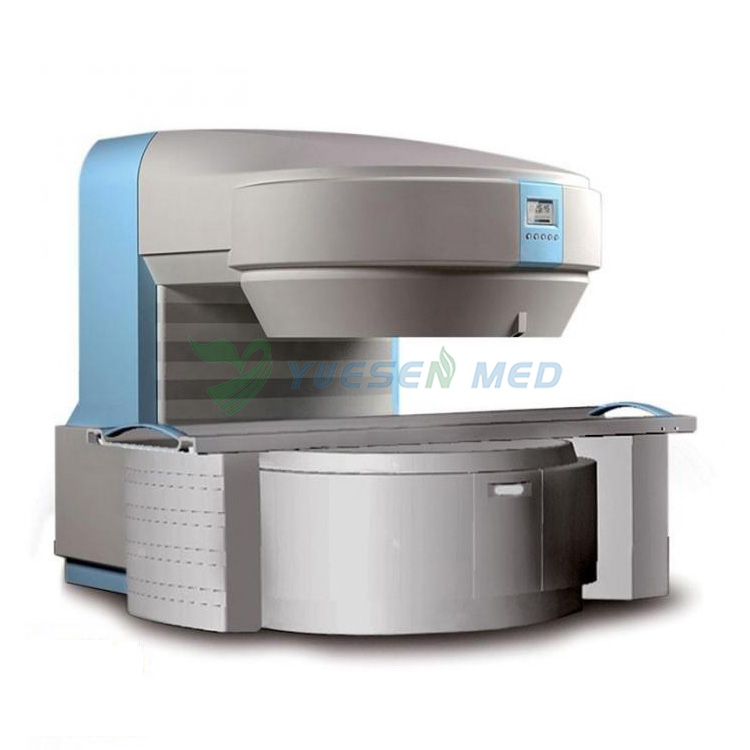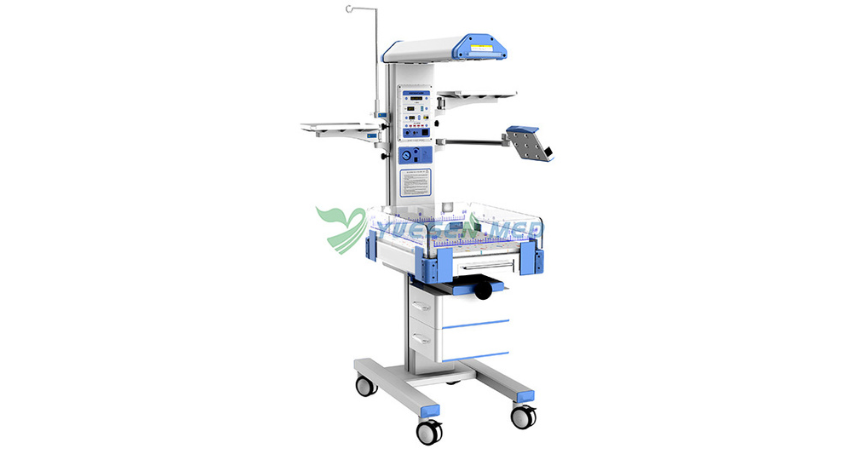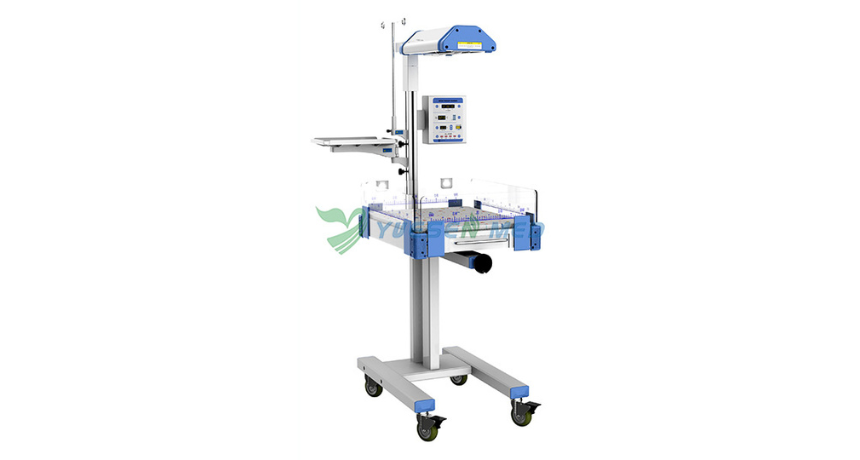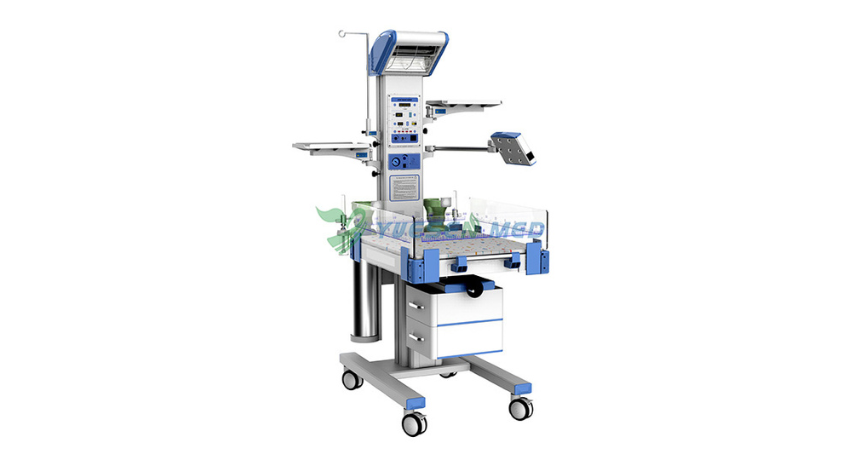Hot Products
YSX500D 50kW DR system set up and put into service in Cambodia.
YSENMED YSX500D 50kW digital x-ray system has been successfully set up and put into service in a hospital in Cambodia.
YSX056-PE serving as a vehicle-mounted x-ray in the Philippines
YSX056-PE 5.6kW portable x-ray unit has been adapted to fit on a truck, to provide mobile x-ray examination service for remote communities in the Philippines.
X Ray Machine To Zimbabwe
x ray machine, 50KW x ray machine
Microscope To Malawi
Achromatic objectives: 4X、10X、40X(S), 100X(S、Oil) Wide field eyepiece: WF10X(WF16X for option) Eyepiece head: Sliding binocular head inclined at 45° Stage: Double layer mechanical stage size 140X140mm, moving range 75X45mm Focusing: Coaxial coarse and
Why the Medical 0.3T MRI Scanner is a Cost-Effective Solution for Diagnostic Imaging
Views : 1976
Update time : 2024-09-23 16:36:00
When it comes to diagnostic imaging, MRI (Magnetic Resonance Imaging) has revolutionized how we view and understand the human body. But not all MRI machines are created equal. Enter the 0.3T MRI scanner—a game-changer in the world of medical imaging. In this article, we'll explore why the 0.3T MRI scanner is not just an alternative but a cost-effective solution that can benefit patients and healthcare providers alike.

Understanding MRI Technology
What is an MRI Scanner?
An MRI scanner uses powerful magnets and radio waves to create detailed images of organs and tissues inside the body. Unlike X-rays or CT scans, MRIs don't use ionizing radiation, making them safer for repeated use.
The Basics of the 0.3T MRI Scanner
The "0.3T" refers to the strength of the magnetic field, measured in Tesla (T). A 0.3T MRI scanner operates at a lower magnetic field strength compared to the more common 1.5T or 3T machines. This difference in strength leads to various advantages and disadvantages that we'll discuss in detail.
The Cost Factor
Lower Initial Investment
One of the most significant advantages of a 0.3T MRI scanner is its lower initial cost. Hospitals and clinics can save hundreds of thousands of dollars by opting for this type of machine. This is particularly beneficial for smaller practices or rural hospitals that might struggle with high equipment costs.
Reduced Operational Costs
Not only is the purchase price lower, but operational costs are also reduced. The 0.3T MRI scanner typically consumes less power, leading to lower electricity bills. Maintenance costs are often lower as well, which can be a significant ongoing expense for healthcare facilities.
Patient Benefits
Increased Accessibility
With lower costs, more facilities can afford to install a 0.3T MRI scanner, making diagnostic imaging more accessible to patients. This is especially crucial in underserved areas where advanced imaging might not be readily available.
Comfort and Convenience
The design of 0.3T MRI machines often allows for a more open environment. Patients who experience anxiety in traditional, enclosed MRI machines may find the 0.3T scanner more comfortable. This can lead to better patient experiences and increased compliance with necessary imaging procedures.
Diagnostic Capabilities
Adequate Imaging for Many Conditions
While a 0.3T MRI may not provide the same level of detail as higher Tesla machines, it is still quite effective for many diagnostic needs. It's particularly useful for imaging soft tissues, joints, and the brain. For many conditions, the images produced are more than adequate for accurate diagnosis.
Versatility in Applications
The 0.3T MRI scanner is versatile enough to handle various imaging tasks, from musculoskeletal imaging to neurological assessments. It can be used in different settings, including outpatient clinics and emergency departments, making it a practical choice for diverse medical needs.
Comparing 0.3T MRI to Higher Tesla Machines
Image Quality Considerations
It's essential to acknowledge that higher Tesla machines (like 1.5T or 3T) do provide superior image quality, especially for complex cases. However, for routine examinations, the difference may not justify the additional costs.
Time Efficiency
Lower Tesla machines often have shorter scan times, which can lead to increased patient throughput. This efficiency can be particularly advantageous in busy medical facilities where time is of the essence.
The Role of Technology in 0.3T MRI Scanners
Advancements in Imaging Technology
Recent advancements in imaging technology have improved the capabilities of 0.3T MRI scanners. Innovations in software and imaging techniques can enhance image clarity and diagnostic accuracy, making these machines even more appealing.
Integration with Other Technologies
Many 0.3T MRI scanners can be integrated with other imaging technologies, such as ultrasound and CT. This integration allows for a more comprehensive approach to diagnosis, giving healthcare providers a fuller picture of a patient's health.
Financial Implications for Healthcare Providers
Return on Investment
For healthcare providers, investing in a 0.3T MRI scanner can lead to a quick return on investment. With lower operational costs and increased patient volume, facilities can see profits sooner than they might with more expensive machines.
Insurance and Reimbursement
Insurance companies often cover MRI scans, but the reimbursement rates can vary. The lower costs associated with 0.3T MRI scans make them more appealing to insurance providers, potentially leading to higher approval rates for patient scans.
Patient Safety and Comfort
Reduced Claustrophobia
One of the most significant barriers to MRI scans is patient anxiety, particularly in traditional closed machines. The open design of many 0.3T MRI scanners can help alleviate this issue, making it easier for patients to undergo necessary imaging without fear.
Safety Considerations
The lower magnetic field strength also reduces the risk of certain adverse effects, such as those related to implanted medical devices. This safety factor can be particularly important for older patients or those with multiple health issues.
Conclusion
In summary, the 0.3T MRI scanner stands out as a cost-effective solution for diagnostic imaging. With its lower initial and operational costs, increased accessibility, and patient comfort, it offers a viable alternative to higher Tesla machines for many healthcare facilities. While it may not replace the need for more powerful machines in every situation, it provides a practical option for routine imaging needs.
As technology continues to advance, the capabilities of 0.3T MRI scanners will likely improve, making them an even more attractive choice for healthcare providers looking to balance cost with quality care. So, if you're considering options for diagnostic imaging, don't overlook the benefits of a 0.3T MRI scanner—it might just be the perfect fit for your needs!
FAQ
What are the main advantages of using a 0.3T MRI scanner?
The primary advantages of a 0.3T MRI scanner include lower initial and operational costs, increased accessibility for patients, and a more comfortable scanning experience due to its often open design. These factors make it an appealing option for smaller clinics and rural hospitals, allowing them to provide essential imaging services without the financial burden of higher Tesla machines.
Is the image quality of a 0.3T MRI scanner sufficient for accurate diagnosis?
Yes, while a 0.3T MRI scanner may not provide the same level of detail as 1.5T or 3T machines, it is still capable of producing high-quality images that are adequate for diagnosing many conditions, particularly those involving soft tissues, joints, and the brain. For routine examinations, the image quality is often sufficient for accurate assessments.
Are there any safety concerns associated with using a 0.3T MRI scanner?
Generally, 0.3T MRI scanners are considered safe for most patients. The lower magnetic field strength reduces the risk of adverse effects, especially for individuals with implanted medical devices. However, patients should always inform their healthcare providers about any implants or medical conditions prior to undergoing an MRI.

Understanding MRI Technology
What is an MRI Scanner?
An MRI scanner uses powerful magnets and radio waves to create detailed images of organs and tissues inside the body. Unlike X-rays or CT scans, MRIs don't use ionizing radiation, making them safer for repeated use.
The Basics of the 0.3T MRI Scanner
The "0.3T" refers to the strength of the magnetic field, measured in Tesla (T). A 0.3T MRI scanner operates at a lower magnetic field strength compared to the more common 1.5T or 3T machines. This difference in strength leads to various advantages and disadvantages that we'll discuss in detail.
The Cost Factor
Lower Initial Investment
One of the most significant advantages of a 0.3T MRI scanner is its lower initial cost. Hospitals and clinics can save hundreds of thousands of dollars by opting for this type of machine. This is particularly beneficial for smaller practices or rural hospitals that might struggle with high equipment costs.
Reduced Operational Costs
Not only is the purchase price lower, but operational costs are also reduced. The 0.3T MRI scanner typically consumes less power, leading to lower electricity bills. Maintenance costs are often lower as well, which can be a significant ongoing expense for healthcare facilities.
Patient Benefits
Increased Accessibility
With lower costs, more facilities can afford to install a 0.3T MRI scanner, making diagnostic imaging more accessible to patients. This is especially crucial in underserved areas where advanced imaging might not be readily available.
Comfort and Convenience
The design of 0.3T MRI machines often allows for a more open environment. Patients who experience anxiety in traditional, enclosed MRI machines may find the 0.3T scanner more comfortable. This can lead to better patient experiences and increased compliance with necessary imaging procedures.
Diagnostic Capabilities
Adequate Imaging for Many Conditions
While a 0.3T MRI may not provide the same level of detail as higher Tesla machines, it is still quite effective for many diagnostic needs. It's particularly useful for imaging soft tissues, joints, and the brain. For many conditions, the images produced are more than adequate for accurate diagnosis.
Versatility in Applications
The 0.3T MRI scanner is versatile enough to handle various imaging tasks, from musculoskeletal imaging to neurological assessments. It can be used in different settings, including outpatient clinics and emergency departments, making it a practical choice for diverse medical needs.
Comparing 0.3T MRI to Higher Tesla Machines
Image Quality Considerations
It's essential to acknowledge that higher Tesla machines (like 1.5T or 3T) do provide superior image quality, especially for complex cases. However, for routine examinations, the difference may not justify the additional costs.
Time Efficiency
Lower Tesla machines often have shorter scan times, which can lead to increased patient throughput. This efficiency can be particularly advantageous in busy medical facilities where time is of the essence.
The Role of Technology in 0.3T MRI Scanners
Advancements in Imaging Technology
Recent advancements in imaging technology have improved the capabilities of 0.3T MRI scanners. Innovations in software and imaging techniques can enhance image clarity and diagnostic accuracy, making these machines even more appealing.
Integration with Other Technologies
Many 0.3T MRI scanners can be integrated with other imaging technologies, such as ultrasound and CT. This integration allows for a more comprehensive approach to diagnosis, giving healthcare providers a fuller picture of a patient's health.
Financial Implications for Healthcare Providers
Return on Investment
For healthcare providers, investing in a 0.3T MRI scanner can lead to a quick return on investment. With lower operational costs and increased patient volume, facilities can see profits sooner than they might with more expensive machines.
Insurance and Reimbursement
Insurance companies often cover MRI scans, but the reimbursement rates can vary. The lower costs associated with 0.3T MRI scans make them more appealing to insurance providers, potentially leading to higher approval rates for patient scans.
Patient Safety and Comfort
Reduced Claustrophobia
One of the most significant barriers to MRI scans is patient anxiety, particularly in traditional closed machines. The open design of many 0.3T MRI scanners can help alleviate this issue, making it easier for patients to undergo necessary imaging without fear.
Safety Considerations
The lower magnetic field strength also reduces the risk of certain adverse effects, such as those related to implanted medical devices. This safety factor can be particularly important for older patients or those with multiple health issues.
Conclusion
In summary, the 0.3T MRI scanner stands out as a cost-effective solution for diagnostic imaging. With its lower initial and operational costs, increased accessibility, and patient comfort, it offers a viable alternative to higher Tesla machines for many healthcare facilities. While it may not replace the need for more powerful machines in every situation, it provides a practical option for routine imaging needs.
As technology continues to advance, the capabilities of 0.3T MRI scanners will likely improve, making them an even more attractive choice for healthcare providers looking to balance cost with quality care. So, if you're considering options for diagnostic imaging, don't overlook the benefits of a 0.3T MRI scanner—it might just be the perfect fit for your needs!
FAQ
What are the main advantages of using a 0.3T MRI scanner?
The primary advantages of a 0.3T MRI scanner include lower initial and operational costs, increased accessibility for patients, and a more comfortable scanning experience due to its often open design. These factors make it an appealing option for smaller clinics and rural hospitals, allowing them to provide essential imaging services without the financial burden of higher Tesla machines.
Is the image quality of a 0.3T MRI scanner sufficient for accurate diagnosis?
Yes, while a 0.3T MRI scanner may not provide the same level of detail as 1.5T or 3T machines, it is still capable of producing high-quality images that are adequate for diagnosing many conditions, particularly those involving soft tissues, joints, and the brain. For routine examinations, the image quality is often sufficient for accurate assessments.
Are there any safety concerns associated with using a 0.3T MRI scanner?
Generally, 0.3T MRI scanners are considered safe for most patients. The lower magnetic field strength reduces the risk of adverse effects, especially for individuals with implanted medical devices. However, patients should always inform their healthcare providers about any implants or medical conditions prior to undergoing an MRI.
Related News
Read More >>
 What is the Difference Between Radiant Warmer and Phototherapy?
What is the Difference Between Radiant Warmer and Phototherapy?
Apr .19.2025
Radiant warmers and phototherapy are crucial in neonatal care, but they serve different purposes. Let's dive into the nitty-gritty of these two techniques and explore how they differ, and when each is appropriate.
 YSX056-PE portable digital x-ray unit set up in the Philippines
YSX056-PE portable digital x-ray unit set up in the Philippines
Apr .19.2025
YSX056-PE portable digital x-ray unit has been set up in a hospital in the Philippines and the good quality images please the doctors.
 Is an Infant Radiant Warmer Good for Babies' Health?
Is an Infant Radiant Warmer Good for Babies' Health?
Apr .13.2025
What exactly is the infant radiant warmer, and how does it contribute to a baby's health? Let's dive into this topic and explore the ins and outs of infant radiant warmers.
 What is an Infant Radiant Warmer?
What is an Infant Radiant Warmer?
Apr .12.2025
One of the unsung heroes in neonatal care is the infant radiant warmer. But what exactly is it? Let's dive into the world of infant care and explore the ins and outs of this vital device.



